Prevention is better than cure. The expression is commonly used in medicine, but it is perfectly valid for wood. It is much easier to ensure that wood is protected against attack by fungi, mold, mildew and wood borers than to treat it when it is already infested. Treatments to save attacked wood are often aggressive, time-consuming and sometimes the attack is so extensive that it is impossible to save the wood. All the more so, wood needs to be treated if it is used in building structures covered with other materials. Signature Deposib in Sibiu offers treatments, both for prevention and for infested wood. Bochemit Opti F+ is used for the preventive treatment of wood against fungal, mold and insect attack.
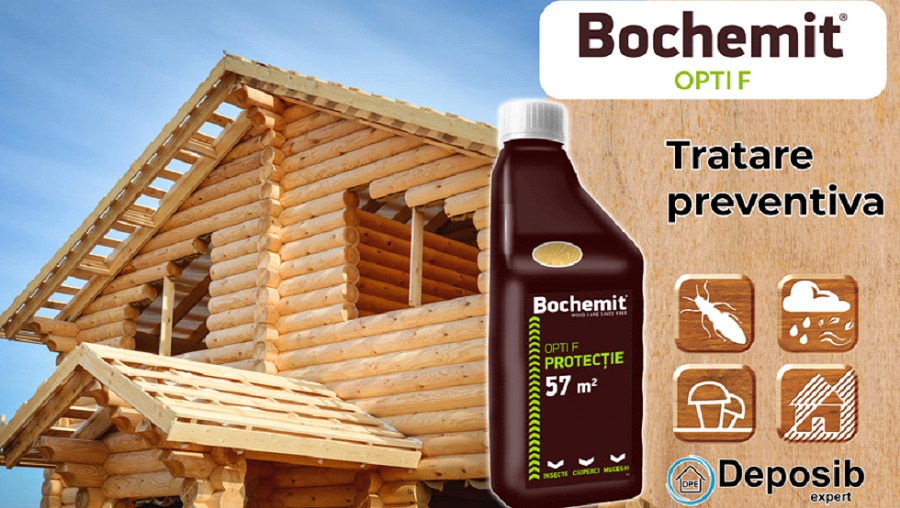
Conditions conducive to fungi and mold growth
Insect and fungal attack on wood occurs when conditions are favorable. What are favorable conditions? High humidity, temperature suitable for the growth of the organisms and poor ventilation (lack of air circulation). Let's take them one at a time.
Humidity is 8-12% for wood used indoors and 14-18% for wood used outdoors. If conditions occur that favor exceeding these limits - seepage, condensation, flooding, flooding, standing water - the wood will absorb water, its humidity will increase and it will be favorable to fungal growth and insect attack. High humidity is the main cause of wood infestation.
Indoors, if the humidity exceeds 18-20%, conditions become perfect for fungi growth. The problem is that once infested with some fungi, even if the humidity drops, they will find a way to protect themselves, survive and spread on the wood. Over time, the strength of wood decreases and can become a problem, especially if it is part of the structure. And it's not just about timber frame houses. Houses have, for example, timber framing, even if they are concrete or brick. Weakening the strength can cause the roof to sag or even collapse.
Temperature 20-24°C is perfect for fungi and insects to thrive in high humidity. But fungi can grow from as low as 0°C and up to 36-37°C, the normal human body temperature. There are, however, fungi that can survive at low temperatures for long periods of time. As soon as the temperature returns to a temperature suitable for growth, they reactivate and begin to expand. High temperatures destroy any fungus, but it is difficult, sometimes impossible, to treat infested wood in a building in this way. The high temperature should be maintained for a long period so that the heat penetrates deep into the wood.
Air circulation is one of the basic laws for keeping wood dry and healthy. If, by chance, water does get into certain areas, air circulation will allow it to dry quickly, protecting the wood. If there are vents in the house, don't cover them because of draughts or cold air getting in. You could do serious damage to the building. Indeed, fungi need air to grow and breathe. Attack does not occur if the wood is submerged in salt water or other airless environments. But air currents are not good for the fungus, it thrives better in spaces where no air circulates.
The condition for a house not to be infested by insects, mold or fungus is that it is well designed, built and maintained. In such a house, the possibility of condensation is non-existent, and any increased dampness that occurs accidentally will disappear quickly enough to leave no room for infestation.
Fungi that attack wood
Wood-boring insects are a serious problem for wood lovers. And to present as much information as possible, we have "covered" the subject in several articles. You can see them here why cavities occur, as well as antique solutions in how to get rid of wood decay and other wood pests
The subject has been covered extensively here and here, so now we're talking about mushrooms. There are five groups of fungi that thrive on wood:
- brown rot (house sponge, basement fungus, brown rot)
- white rot (causes white stains on wood)
- soft rot (used in some industrial processes)
- staining (only causes discoloration, does not attack the strength of the wood)
- molds (surface formations that help to identify places with high humidity, which are conducive to fungal attack).
House sponge or tear fungus (Merulius Lacrimans) is considered one of the most dangerous fungi for all resinous trees, but it can also damage deciduous trees, even oak. It feeds on cellulose, providing the moisture it needs to grow by breaking it down. It can also attack other materials containing cellulose - paper, textiles, insulation materials. House sponge is particularly widespread on floorboards, the ends of beams, floorboards, door and window frames, the backs of wainscoting, and the joists of roofs. It can extend to masonry and plaster and can penetrate walls over 1.5 m thick. It grows very quickly and produces an abundant, white mycelium with thick, grayish-brown threads.
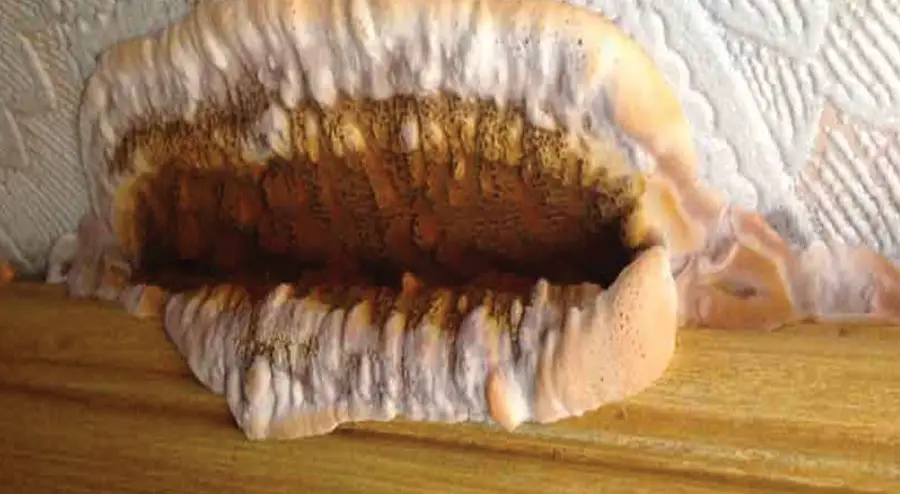
Basement mushroom (Coniophora putanea) is one of the most common fungi that can grow in dwellings. Preferred sites are uninsulated, damp spaces in basements, basement floors or ceilings. It spreads rapidly and can spread to neighboring houses. It is very dangerous because, once present, it is impossible to stop as it passes through masonry from room to room, even building to building. It attacks both hardwoods and softwoods. It produces black, fan-shaped, branched mycelium (the main identification criterion), decomposing the wood in the form of prismatic brown rot.
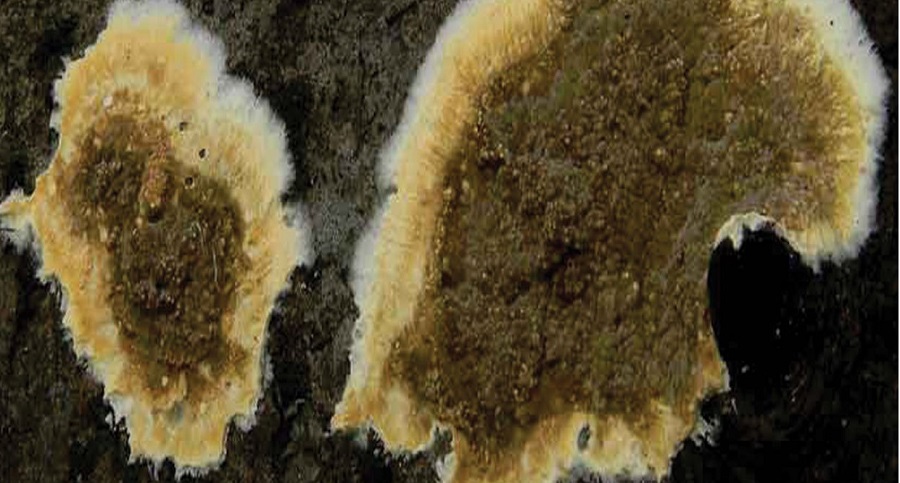
Brown rot (Gloeophyllum) occurs mainly on exterior resinous wood, but also on wood used in house construction. It mainly attacks floor joists, roof beams, framing and joinery. It produces an intense brown rot inside wood. Even when the attack is intense, the outer surface of the wood remains unchanged.

Deposib's Bochemit Opti F+, a product that helps prevent the onset of problems
Bochemit Opti F+ is both fungicidal and insecticidal, being a concentrate in liquid form. It is used for long-term preventive protection of wood against fungi and insect pests. It is very suitable for treating wood used in construction (floors, wainscoting, paneling, frameworks), as well as that used in landscaping (pergolas, gazebos, fences). It is recommended for the treatment of class 1, 2 and 3 structural timber according to EN 335. The treatment can be used for both new and old wood.
Main product features Bochemit Opti F+ are:
- Long-lasting protection
- A concentrated product that dilutes with water
- Can be used for both interior and exterior woodwork
- Easily applied by brushing, dipping or pump spraying
- It has a basic pH between 10 and 11.5
- No specific odor (and neither does treated wood)
- Can be used on wood with high humidity up to 40%.
The treatment is applied on clean wood from which the traces of processing have been removed and the paint has been stripped or which has been cleaned of old layers of paint. For brush or spray application, the dilution is 1:9 with water. For dipping, the dilution varies between 1:6 and 1:19, depending on how long the wood has been immersed. Consumption depends on the absorption capacity of the wood. For brushing or spraying, 1-2 coats can be applied. The second coat is applied only after the first has dried. Opti F+ is the improved, more concentrated version of Opti F, which protects a larger surface area (66 m²/kg Opti F+ compared to 57 m²/kg Opti F)
Wood treated with Bochemit Opti F+ it does not have a film, the product is deeply absorbed. After drying it can be finished with products commonly used for interior or exterior wood finishing. The product is manufactured in clear, brown or green. The clear version does not yellow the wood. It is available in 1 kg, 5 kg, 15 kg and 50 kg packages and prices are here.
Bochemit Opti F+ provides preventive protection against all natural wood pests (fungi, insects, mold), both indoors, throughout the life of the wood, and outdoors, for up to 10 years. For longer-term protection outdoors, we recommend applying Bochemit Estetik protective oil colored, which protects against all environmental factors (UV radiation, rain, freeze-thaw, wind, etc.). Bochemit Estetik Protective Oil highlights the natural grain of the wood giving it a pleasant appearance and moisturizes the wood, preventing cracking.
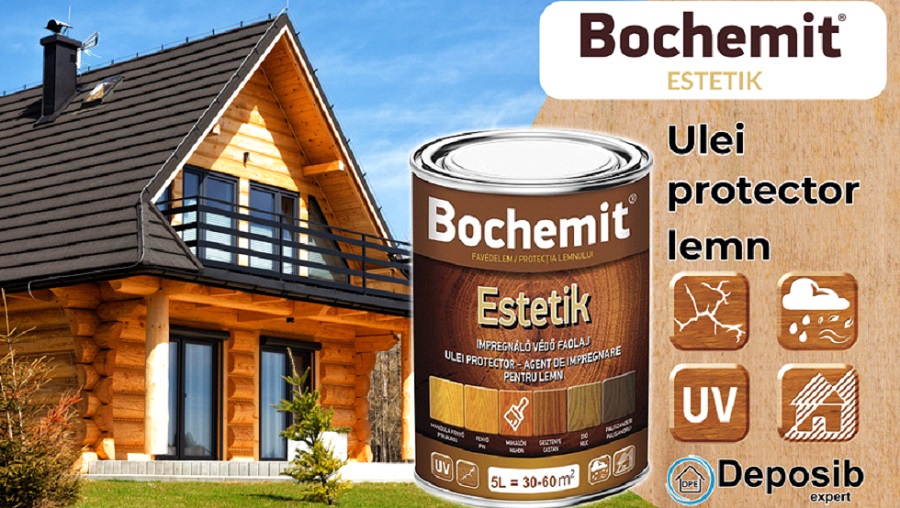
Product used and appreciated in numerous public and private projects
Preventive treatment with Bochemit Opti F+ has proven its qualities over the years, both on the wood used in old projects, some of them with historical significance, and on new, private projects. Here are just a few examples:
- The largest round log cabin in Romania (on Transalpina),
- Wooden chalet at the highest altitude in the country, 2100 m, at Bâlea lac,
- Largest pontoon for events on Lake Tarnița,
- The most beautiful swimming pool, at Cheile Grădiștei,
- Casino in Vatra Dornei,
- Historic buildings over 300 years old from all over Romania.
It is used as a preventive wood treatment product in 7 of the country's museums. The latest project with Bochemit Opti F+ if Bochemit EstetikThe ongoing project is the protection of the structure of the Dacian Fortress of Costești, a project realized in partnership with the Ambulance for Monuments, Prince Charles Association and many volunteers, architects and architecture students. We will come back to the subject when the project is finished. Until then, a few pictures to give you an idea.
Bochemit products has been manufactured in the Czech Republic for over 50 years and the parent company, Bochemie, has been producing chemicals for over 110 years. Deposib Expert imports the products from the factory in Bochumin, Czech Republic and distributes them throughout Romania through authorized distributors.
As I said, prevention is better than treatment. It's cheaper and hassle-free.



























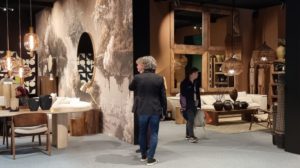
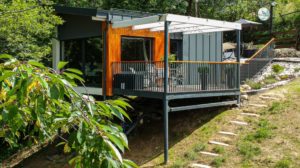




Can you tell me your opinion about Bios Wood Total? In the leaflet of the substance, it says that the water in the wood beam, in the log... is transformed with the help of silica, so that the wood almost/almost petrifies. It doubles its resistance to bending, fire, et cetera. And the wood requires no further treatment for the rest of its life.
My question is: in a house made of wooden beams, treated with Bios Wood Total, is there still a transfer of water vapour from the house to the outside? I mean, will the vapours in the room pass through the wood panelling and remain in the cellulose insulation because they can no longer pass through the joist to the outside?
Hello!
I have not used Bios Wood Total, but I can tell you about the use of sodium silicate in wood protection. Glass water, as sodium silicate is also called, is used to protect wood against insect attack and to harden it. Indeed, when using silicate, some of the water inside is replaced by the silicate solution and the wood becomes harder. It is a solution used to restore or recondition old wood, which after treatment becomes harder and no longer brittle.
In the case of insect treatment, the surface of the treated wood becomes harder and more difficult to attack. In addition, the wood takes on a different texture that is no longer recognised by insects.
Sodium silicate is considered a natural wood treatment solution.
More information in the link below.
All the best!
https://revistadinlemn.ro/2017/06/02/tratarea-lemnului-cu-silicat-de-sodiu/